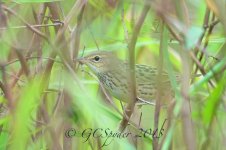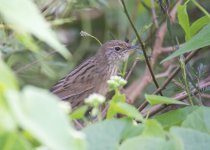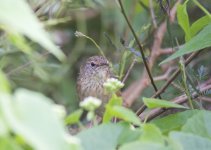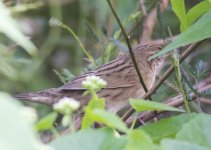Heard a couple of (I guessed is) Lanceolated Warblers calling among some dense thickets in a reclaimed land in Singapore (which is their wintering grounds).
Can hear them calling very near me among the thickets but could never see them. Guess they are hopping on the ground and not foraging on the branches of the thickets. Any advise how to get a view of them? What time is the best. Would after rain a better time to catch them out in the open?
Can hear them calling very near me among the thickets but could never see them. Guess they are hopping on the ground and not foraging on the branches of the thickets. Any advise how to get a view of them? What time is the best. Would after rain a better time to catch them out in the open?







